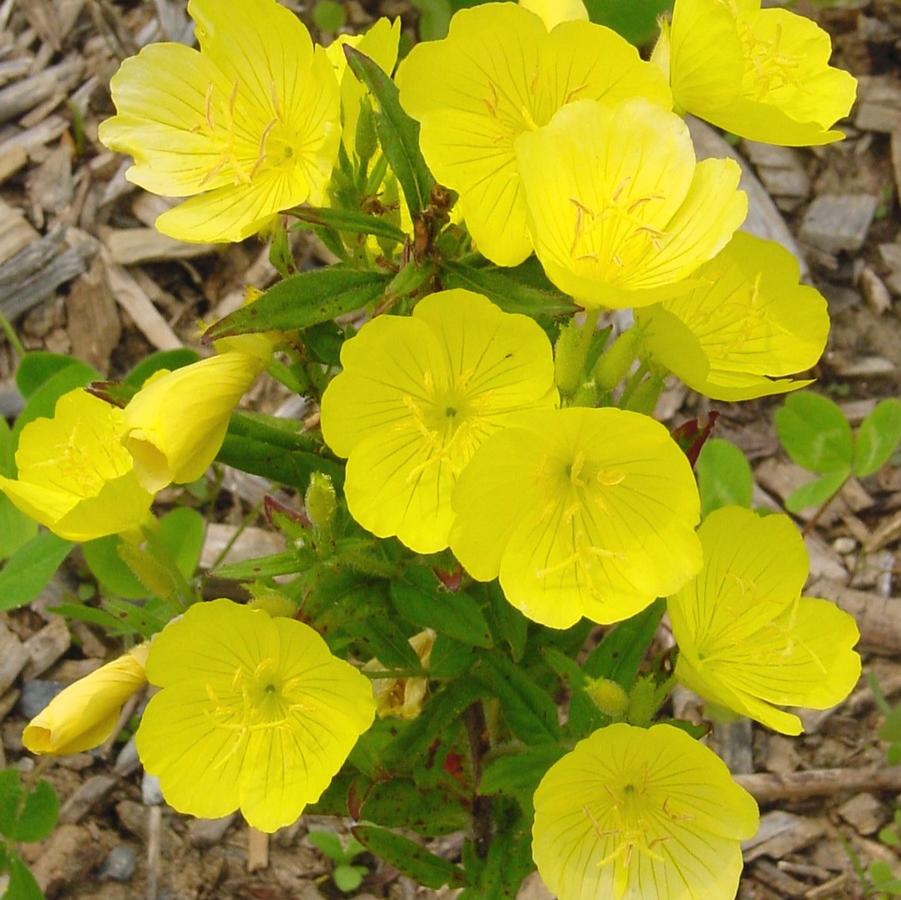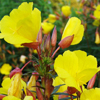

Plant Calculator
Enter the approximate length and width of the area you will be planting and click 'Calculate' to determine how many Oenothera fruticosa you will need.
Correct and successful spacing is complex and depends on project conditions. We encourage you to call us at 877-ECO-PLUG for project specific recommendations and further assistance.
Oenothera fruticosa
sundrops
- Category: Perennial, Native
- Hardiness Zone: 4-9
- Height: 15-24 Inches
- Spread: 3 Feet
- Spacing: 12-24 Inches
- Bloom Color: Yellow
A tough and reliable perennial, well-suited to hot dry sites. The stems of Oenothera fruticosa are thin, hairy, and reddish with similar leaves. The buds begin as red but open into beautiful bright yellow flowers in early summer. Easy, dependable, a strong grower that can spread a bit, particularly in sandy soils. Great color for a meadow! Native to dry soil, open fields, and open woods from Nova Scotia to Florida.
Exposure
| • | Full Sun |
Wetland Indicator Status
| • | Falcutative (FAC) |
Plug Type
| • | Landscape Plug™ |
Propagation Type
| • | Open pollinated |
Additional Information about Oenothera fruticosa
A tough and reliable perennial, Oenothera fruticosa is well-suited to hot and dry sites. The stems of Oenothera fruticosa are thin, hairy, and reddish with similar leaves. The buds begin red but open into beautiful bright yellow flowers in early summer, growing from 16-36” tall and up to 3’ wide. Sundrops are an easy, dependable, and strong grower that can spread a bit, particularly in sandy soils. The plant used to be a favorite for neighbors to pass along but dropped in popularity over time. Now, with the resurgence of native plants, sundrops are gaining a foothold yet again. It has great color for a meadow!
Oenothera fruticosa is native to dry soil, open fields, and open woods from Nova Scotia to Florida. It performs best in full sun to light shade in light and sandy soil. Overall, the plant has a vigorous and sprawling clumping habit. To encourage a new flush of growth and to prolong the flowering season, cut back foliage to basal crown mid-summer. An additional benefit to this plant is its evergreen basal rosette during the winter that becomes a bright green-red, which is great for groundcover to deter annual winter weeds in a planting.
Oenothera fruticosa supports specialist species, including Melissodes fimbriatus and Lasioglossum oenotherae. Moths pollinate the flowers, particularly Sphinx moths. Other occasional visitors include the Ruby-Throated Hummingbird, honeybees and bumblebees. Sundrops are a cheerful addition to a perennial border and also look wonderful dotted into a warm-season grass meadow, bringing a punctuation of seasonal cheer as it blooms. We have noticed its ability to self-sow freely and that is a consideration when choosing this plant for a planting design.
Growing & Maintenance Tips for Oenothera fruticosa
Performs best in full sun to light shade in light and sandy soil. A vigorous, sprawling, clumping habit. Cut back foliage to promote a new flush of growth to prolong flowering season. Propagate by division, softwood cuttings or seed in early summer. A wonderful addition to borders and perennial beds.

